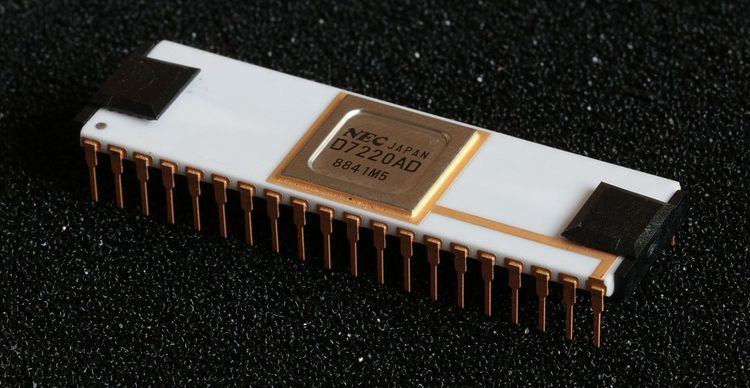Release date 1982 | ||
 | ||
Successor µPD72120 Advanced Graphics Display Controller | ||
The High-Performance Graphics Display Controller 7220 (commonly µPD7220 or NEC 7220) is a video interface controller capable of drawing lines, circles, arcs, and character graphics to a bit-mapped display. It was developed by NEC and used in NEC's APC III computers, the optional graphics module for the DEC Rainbow, the Tulip System-1, and the Epson QX-10.
Contents
The µPD7220 was one of the first implementations of a graphics display controller as a single Large Scale Integration (LSI) integrated circuit chip, enabling the design of low-cost, high-performance video graphics cards such as those from Number Nine Visual Technology. It became one of the best known of what were known as graphics processing units in the 1980s.
Details
The 7220 was announced by NEC Information Systems, the US arm of the Nippon Electric Company (now NEC) in 1982. The project was started in 1979, and a paper was published in 1981. By 1983, it was used in early computers from NEC itself, and others from Digital Equipment Corporation and Wang Laboratories. A year after introduction, one journalist said "The 7220 GDC chip is a component that even some of NEC's competitors have found too good to pass up." When the Apple Lisa was announced in 1983, the press raised questions on why the popular 7220 was not used. Bruce Daniels pointed out that the Lisa primarily used raster graphics (known as bitmap graphics at the time), which could be implemented with less expensive hardware support. Instead, graphics primitives were written in software. Development manager Wayne Rosing added that although the team knew about the 7220, it was not quite available when the design began. There were also restrictions on when the display memory could be accessed: only during certain times in the vertical refresh cycle.
Variants
Variants included:
Internals
Two I/O channels are used, addressing A0 and A1. Reading A0 retrieves the 7220 status. Reading A1 fetches the first byte from the internal queue. Writing to the 7220 uses both registers; A1 for writing the command, A0 for writing the parameters to the queue. The parts had an 8-bit data path. Parts were available with clocks running from 4 MHz to 5.5 MHz, which was considered relatively high-performance for the time.
